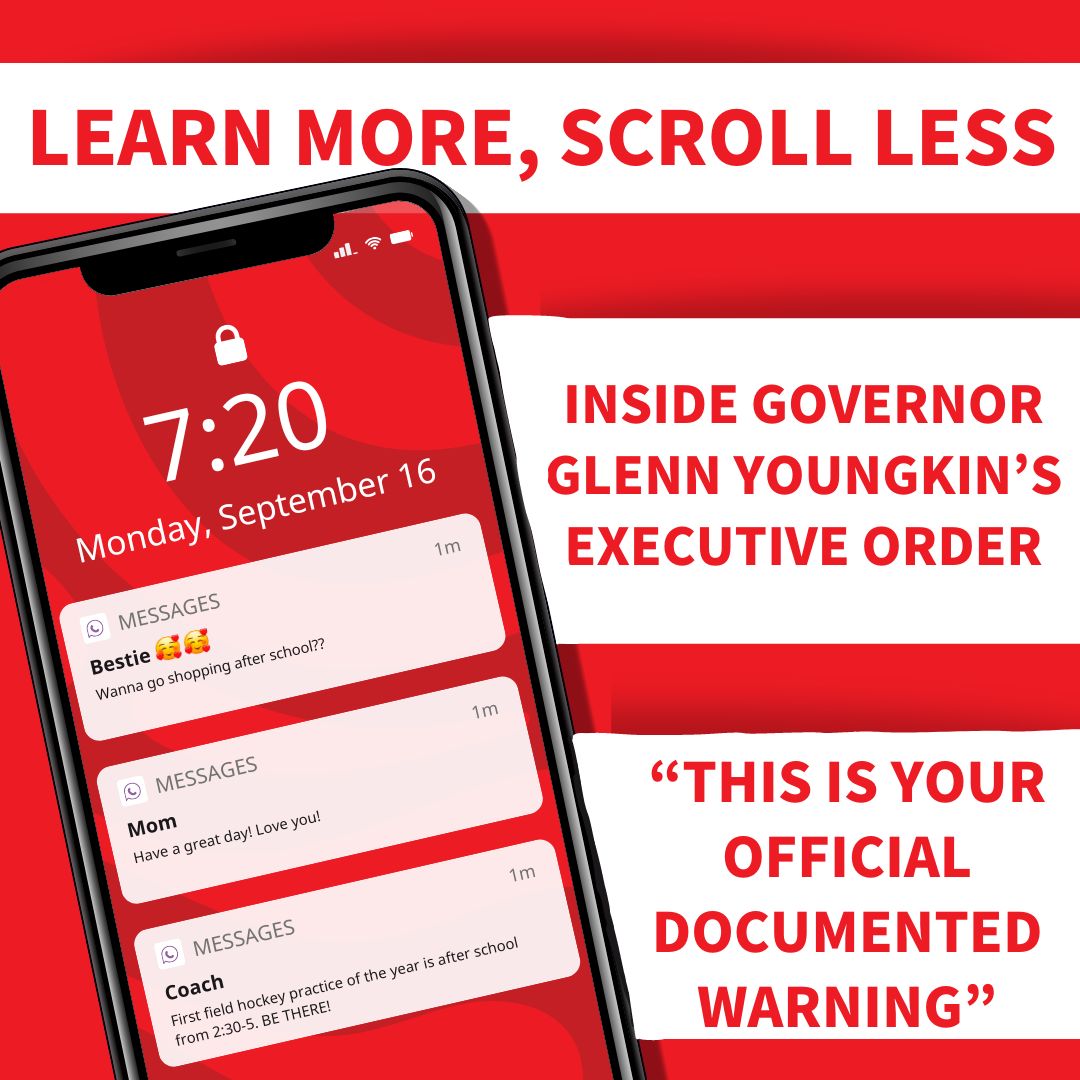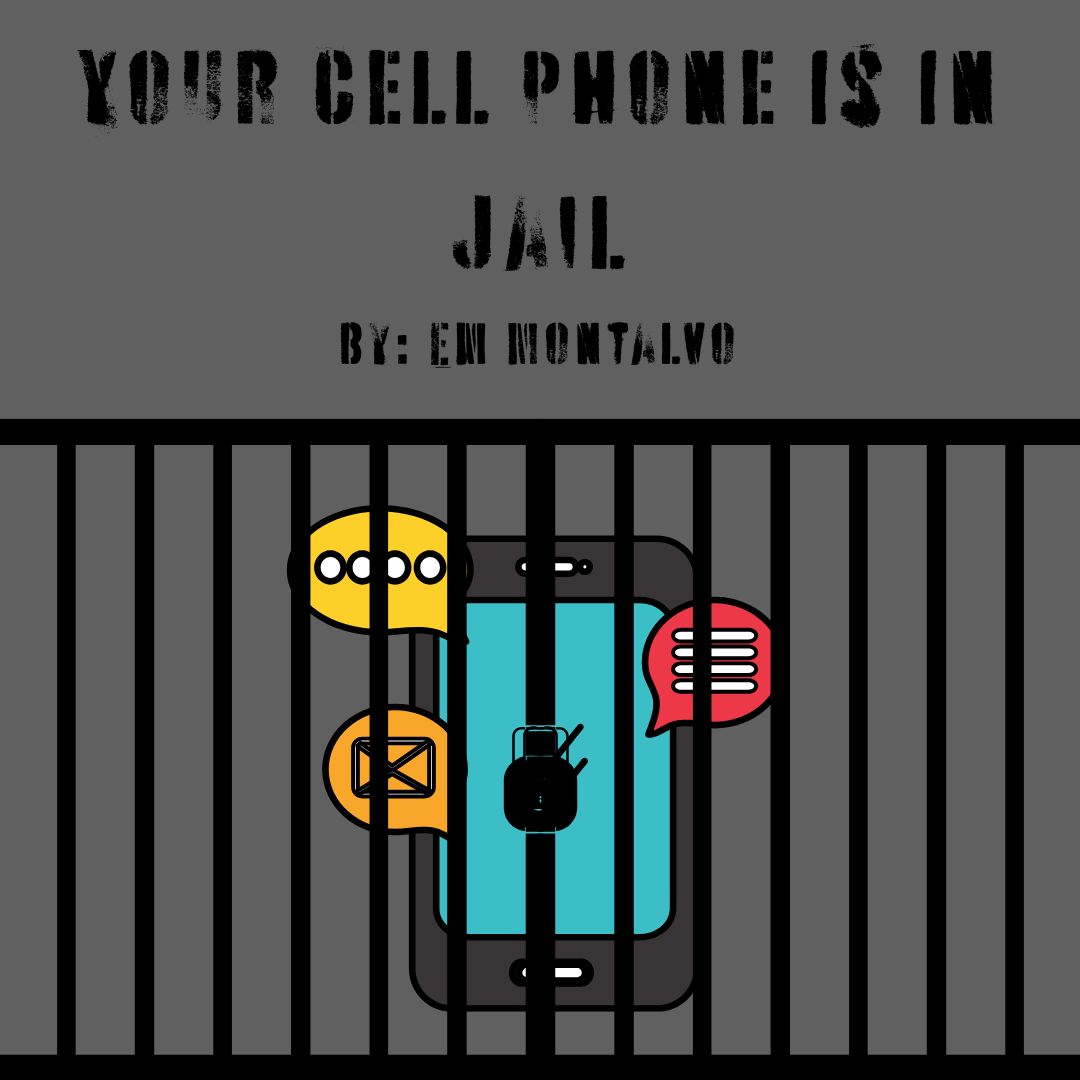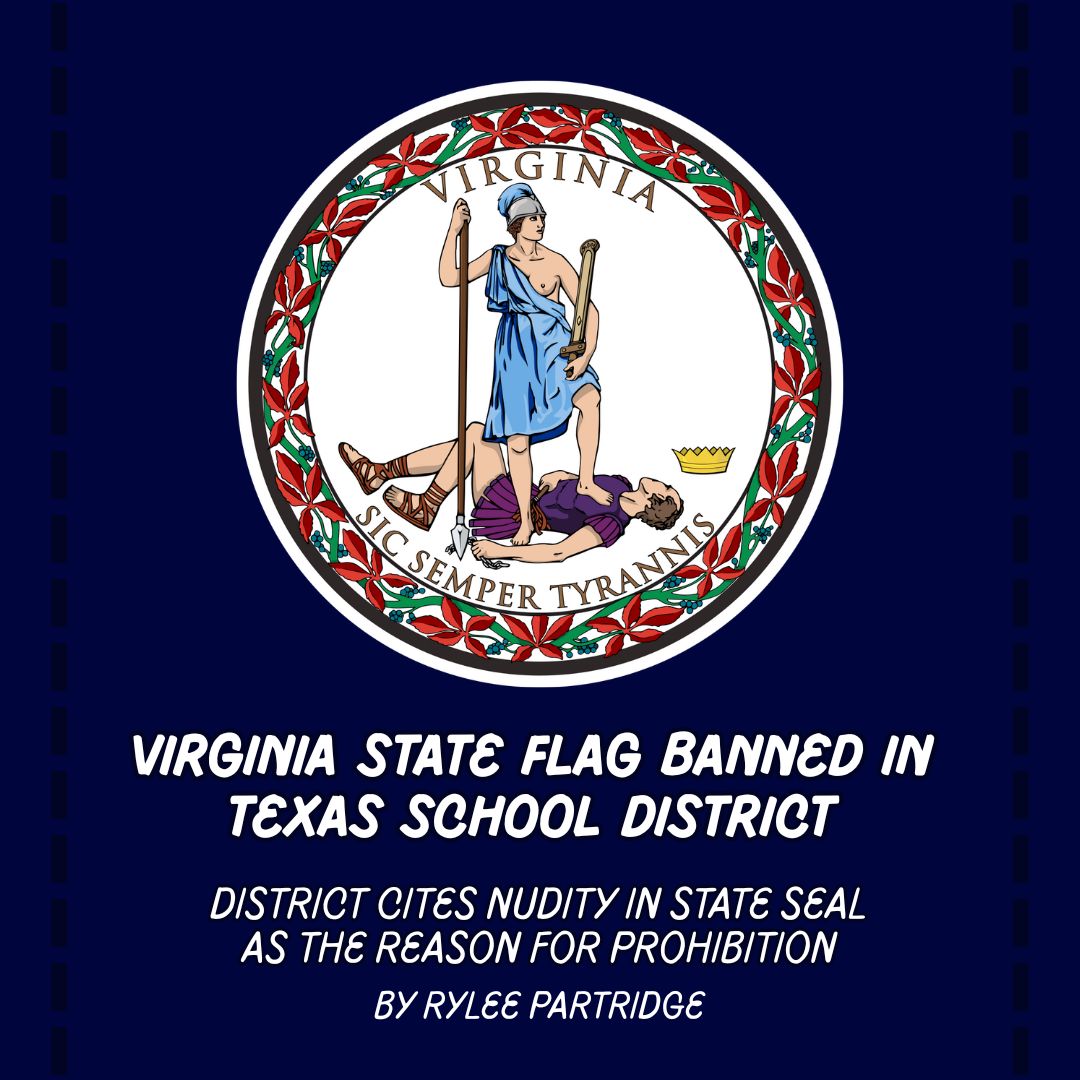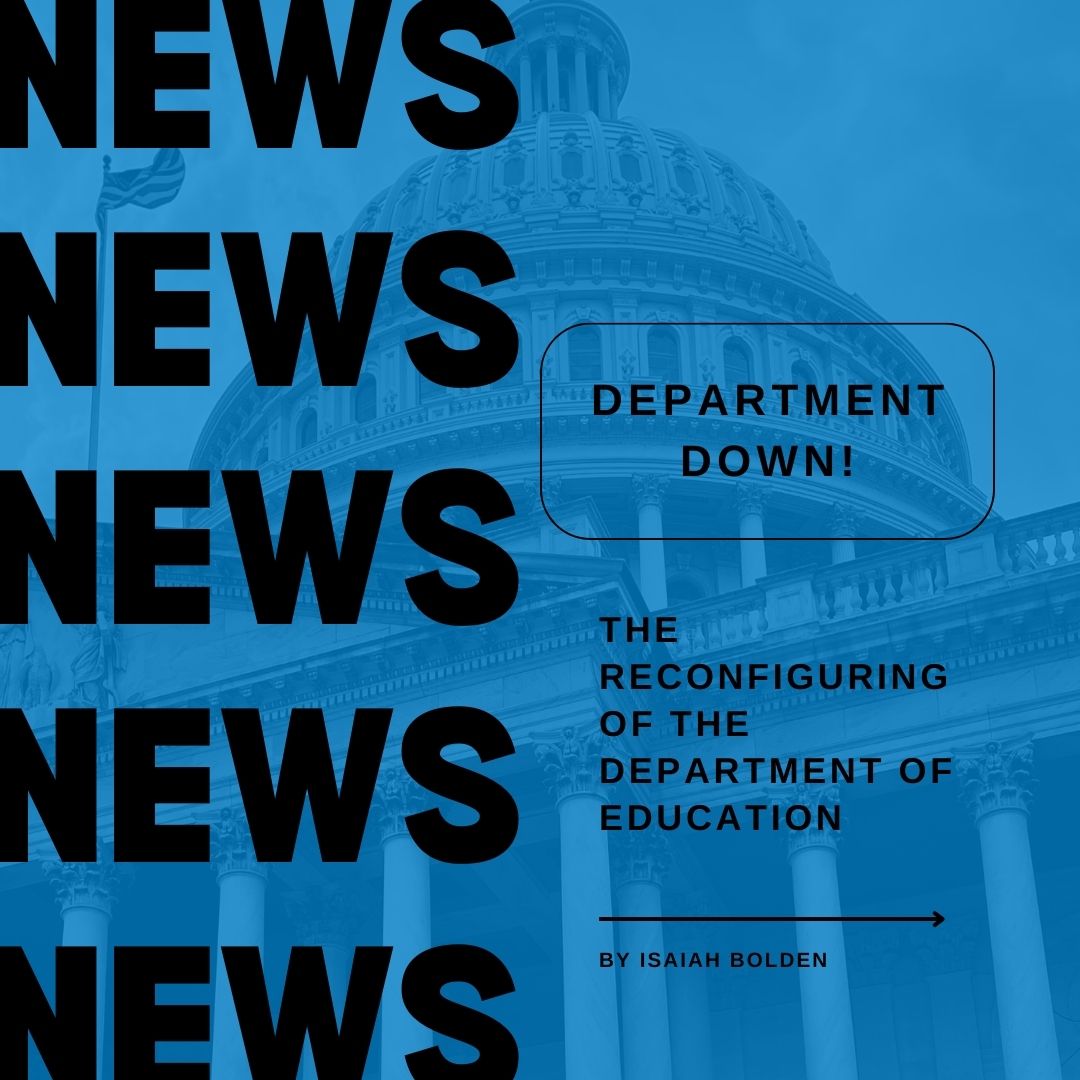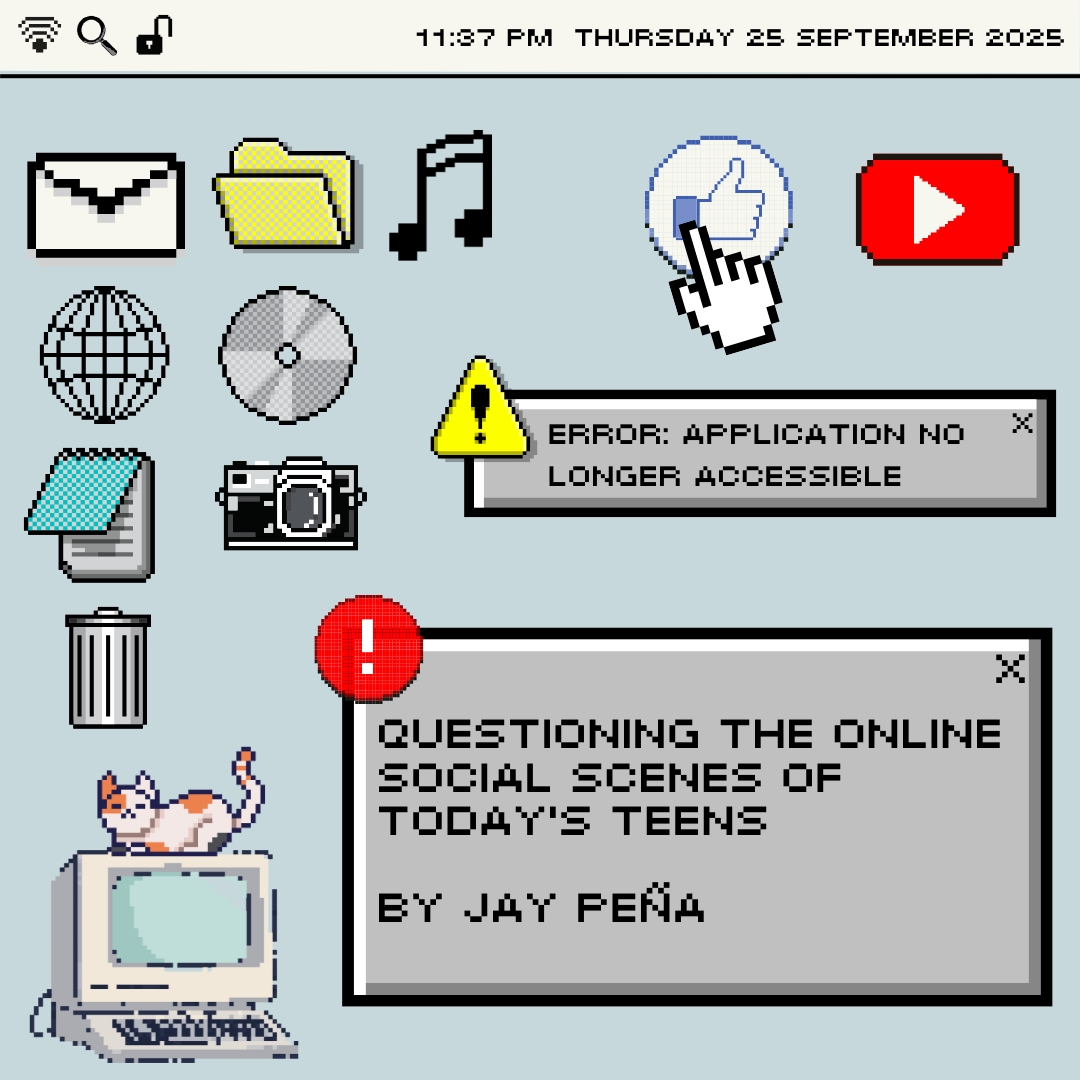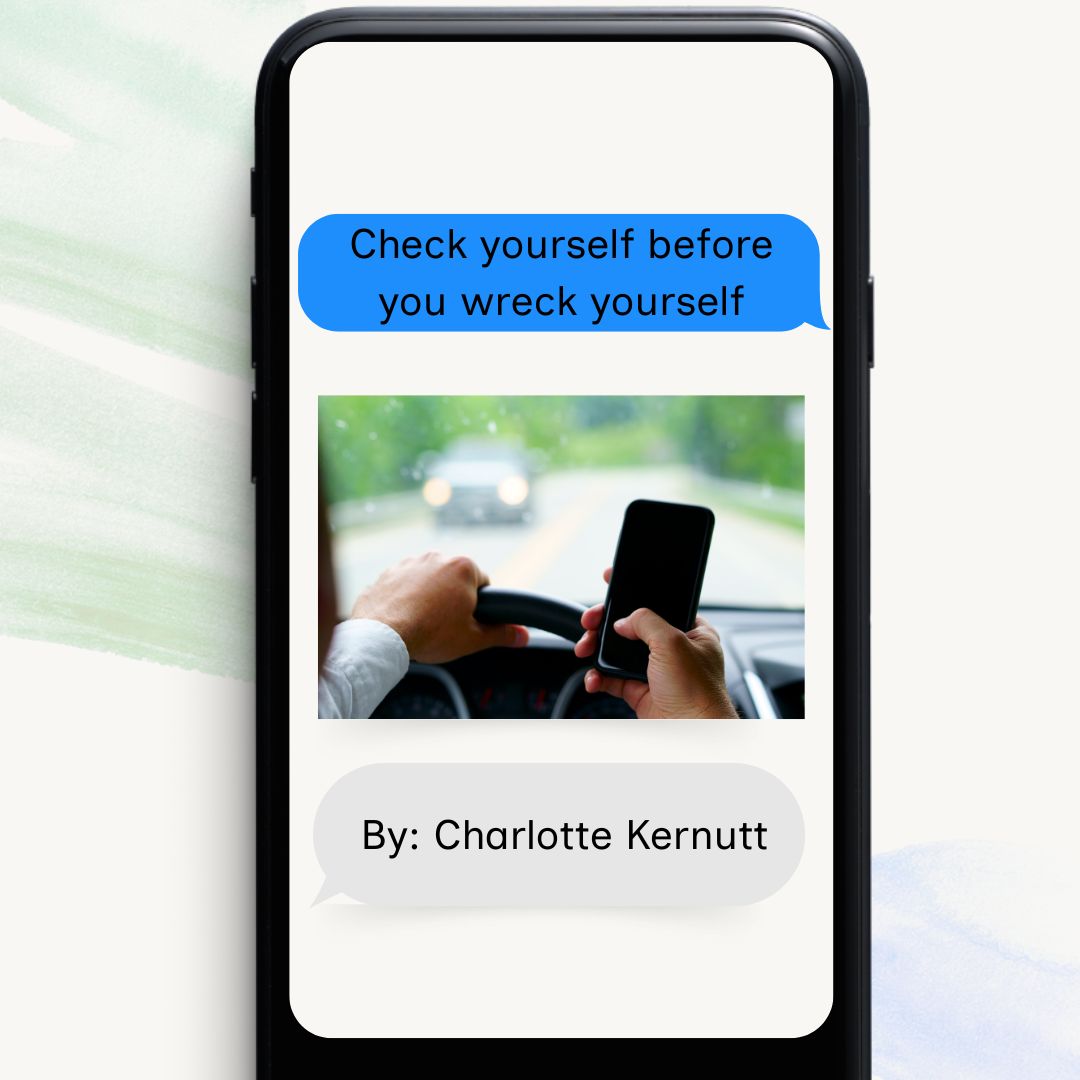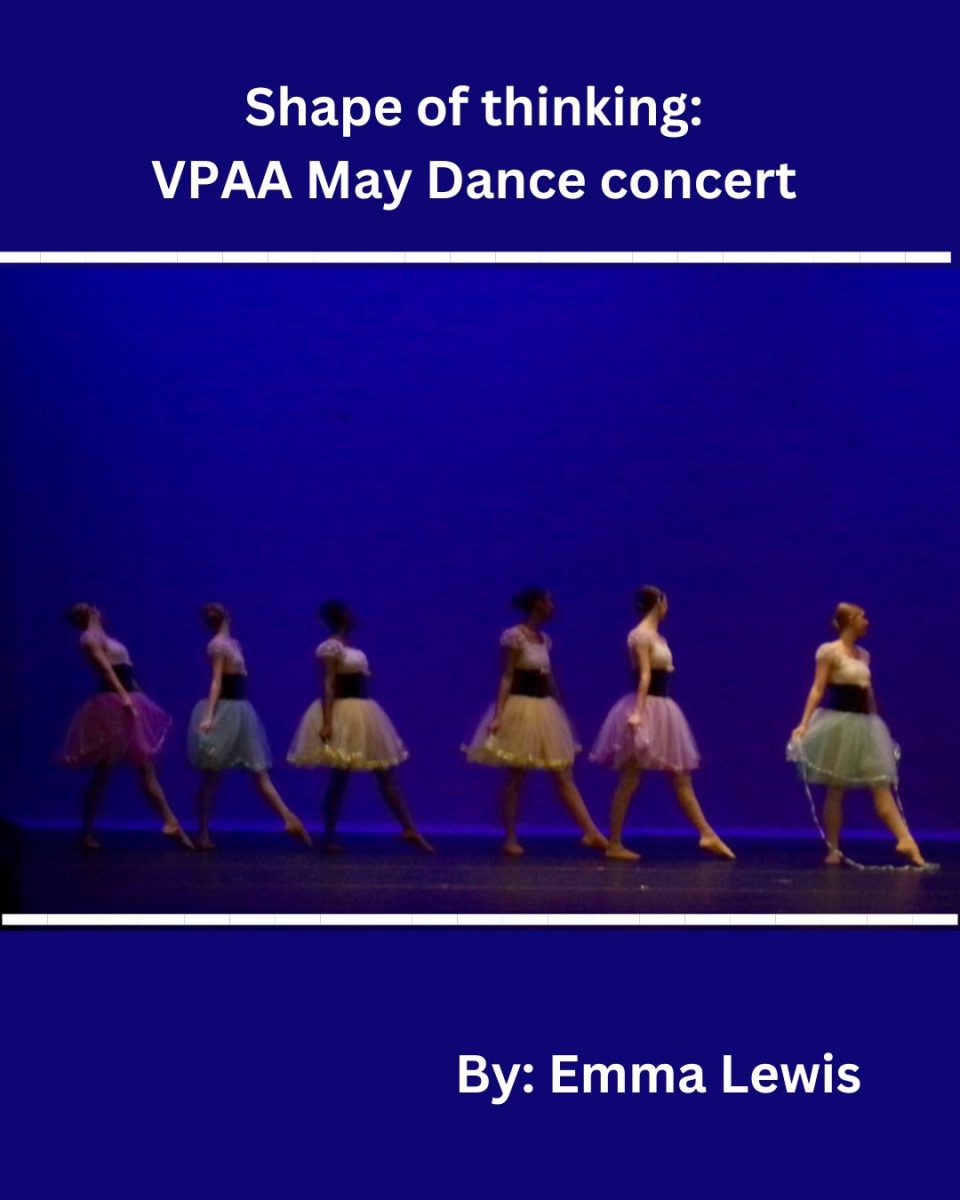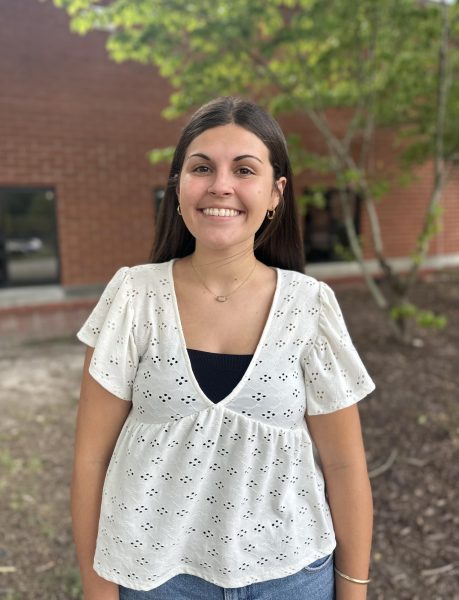While the daily school routine may look similar to last year’s from the perspective of an outsider, any teacher or student will inform you of a policy that is being extremely enforced. In fact, due to the large number of students who feel the impacts of this recent change, it is being immensely enforced.
On July 9, 2024, Governor Glenn Youngkin issued Executive Order 33 to “implement cell phone-free education in Virginia’s K-12 public schools,” with hopes of further protecting the “health and safety of students.” Youngkin emphasizes the importance of the initiative, explaining the substantial effects of technology on students’ mental health, learning behaviors, and habits.
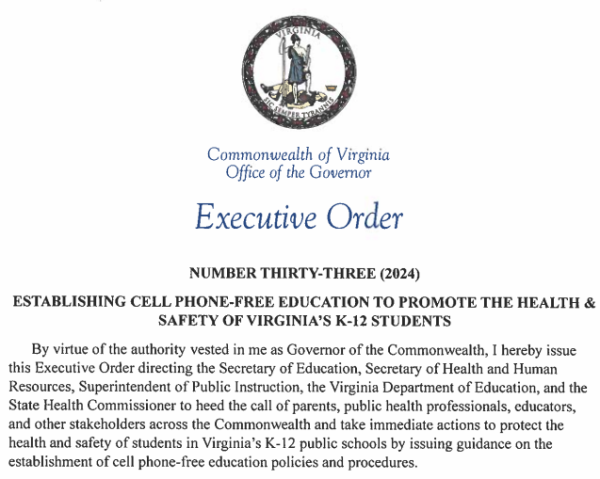
Salem is enforcing the policy by displaying posters around the school that give information about what the policy entails and the repercussions for repeated cell phone use in the classroom. The expectations were made clear by teachers on the first day of class and were further reiterated during the first Advisory session of the year, so every student should be aware of what is being asked of them.
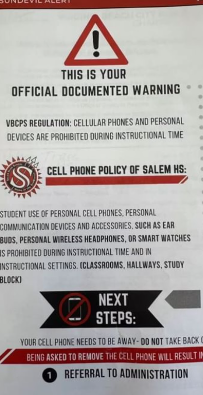
“Cell phones have created issues for students and children in general,” said principal Carey Manugo. “There is quite a bit of distraction, which makes life more complicated for us and our students. Research also indicates that there is a higher level of anxiety, depression, harm, and most recently, threats [when phones are used in school].”
Some teachers agree that the cell phone policy is essential to creating a safer school environment, as they are implementing cell phone “jails” when students use the restroom or travel to other parts of the building. English teacher Robin Lusk-Stancil, for instance, provides an actual, minatured-size version of a jail, for students to place their phone when leaving the classroom.
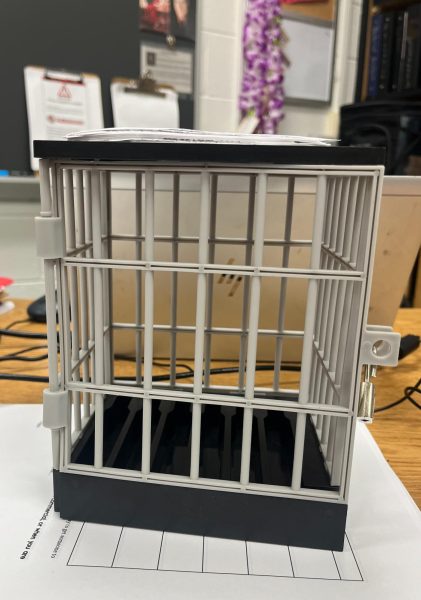
Students’ responses to the policy are mixed.
“I do not mind it as much as most [students],” said junior Kiana Cabanayan. “I do not use my phone that often during instructional time because I work better without music. [The policy] lessens a student’s screen time and allows them to get their work done quicker, instead of procrastinating while being on their phone.”
Many agree with Cabanayan that the policy will prove beneficial, but others have expressed more skeptical sentiments. Freshman Kali Miller states that the policy has made her transition to high school “more challenging,” due to the fact that she cannot contact her parents and friends in times of need.
Unlike Miller, some freshmen are completely indifferent to the policy given that similar guidelines and behaviors were expected of them in middle school.
“[The policy] has not affected me at all,” said freshman Megan Moore. “In middle school, we were not allowed to have our phones at all; my transition to high school would be the same if I was allowed to have my phone in class.”
Upperclassmen have generally had a harder time than the freshman complying to the executive order because it has required them to change their habits. Cabanayan believes that “it is not necessary to give a referral” to a student who is caught using their phone, as “it is too harsh of a punishment.”
“[The policy] has positive effects, but it also has downsides,” said junior Hayden Avellaneda. “If you are in the bathroom during an emergency and you do not have your phone to call anyone, it could result in serious problems.”
Avellaneda also feels that the punishment of a referral for cell phone usage is too extreme, echoing Cabanayan’s thoughts.
“I do not agree with students getting a referral without a warning,” said Avellaneda. “I think students should get a warning and then a detention, instead of a referral for having their phone out for the first time.”
While executing the policy may appear to be a seamless task for administration, even Manugo admits that the transition has not been easy; however, he stresses that the enforcement is necessary to “eliminate distractions that cell phones create not just for students, but for adults as well,” no matter how tedious the application might be.
“The hardest part is clarifying for staff and students, and as far as enforcement, it has to be consistent,” said Manugo. “[The policy] has to be fairly applied and there is a common sense approach that is needed. If a student’s cell phone is put away and not on their person, we don’t want to think too much about it and get involved. It’s just consistency.”
On September 18, the Virginia Department of Education issued additional guidance on the executive order, stating that “high school students shall not have a cell phone or personal electronic communication device during the bell-to-bell school day.” School divisions are expected to adopt policies aligned with the guidance by January 1, 2025. As for now, it is imperative that students adhere to the executive order as it stands now and we will await guidance from Virginia Beach City Public Schools about how the district will interpret the “bell to bell” update.
Remember to stay off of your devices; it is time to power down.
